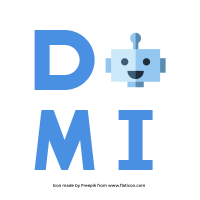BART: Denoising Sequence-to-Sequence Pre-training for Natural Language Generation, Translation, and Comprehension
Abstract
Bart爲預訓練Sequence to Sequence model而設計的去噪自編碼器
基於之前的預訓練結構之後,利用兩種方法去得到BART
(1) 使用任意的噪聲去破壞文本
(2) 學習重建文本(原本為有破壞的文本)
會在生成文本之類的任務相當有效,例如:問答,對話,總結等等…。其他類型也都跟RoBerta差不多
1 | We present BART, a denoising autoencoderfor pretraining sequence-to-sequence models. |
Introduction
BART 是一個預訓練的模型組合了 Bidirectional and Auto-Regressive Transformers
BART 基礎模型是使用standard Transformer-based neural machine translation結構,但可以看作是對BERT(雙向編碼器),GPT(從左至右解碼器)以及許多其他較新的預訓練方案進行了概括。
1 | BART uses a standard Tranformer-based neural machine translation architecture |
BERT採用隨機選擇token進行mask,但Bidirectional Encode會去獨立預測單個mask的字,故不太適合文本生成任務。
GPT採用單向Encoder和利用Autoregressive Decoder去預測下一個字的token是什麼,但缺陷在於無法學習到雙向的部位
BART採用Sequence-to-Sequence的架構把BERT和GPT做一個整合,使用雙向模型去對損壞文本做編碼,在用自回歸模型做解碼去預測該字的下個字,最後的Finetune也會把完整的文本拿進來做微調的動作。
(這邊的mask不只改掉一個,有可能會連續的抹掉)
Model
base model : 6 layers in encoder and decoder
large model : 12 layers in encoder and decoder
基本模型跟BERT相似(transformer Sequence-to-Sequence)
並且還刪除了最後不需要的Linear的地方,整個模型縮小了10%
1 | (1) each layer of the decoder additionally performs cross-attention over |
Pretraining in Noising input
他們實驗了很多種類的加噪的方法(還說這個地方是可以被研究,應該是一個很重要的地方)
- Token Masking : 如同Bert一樣,單純對某些東西做隱藏
- Token Deletion : 隨機的刪除輸入中的tokens,只需要決定tokens的位置即可(要給定的)
- Sentence Permutation : 將句子做亂數排列,same as XLNET.
- Document Rotation : 在句子內隨機選取一個token,然後將該token設為開始旋轉,目的是要認得句子的開頭。
- Text Infilling : 自poison分佈($\lambda = 3$),對句字的某段部分做採樣(mask超過1個),similar to spanBERT(different distribution).

Fine-tuning BART
在模型的訓練完之後會有一個fine-tuning的微調動作
- Sequence Classification Tasks : 給予encoder和decoder相同的輸入,並且將最後一層的decoder 的 hidden state 再丟入一個linear classifier去做預測label的動作。

- Token Classification Tasks : 給予encoder和decoder相同的輸入,但這次是給予decoder 的 hidden state,用這個state去分類這些token
- Sequence Generation Tasks : 由於有自回歸的decoder,所以可以直接執行生成文本的任務訓練。
- Machine Translation : 神奇的解釋(你只要多加了一個encoder,就會變好喔,出處:Edunov et al. (2019)),train end-to-end, 用randomly initialized Encoder取代原本的embedding, 並訓練其將外來詞映射到BART(BART能將其降噪成英語的輸入)。訓練步驟如下:
步驟1 : 先將pretrained encoder, decoder 去固定住,用bitext(平行機器翻譯文本)去對randomly initialized Encoder 去做訓練
步驟2 : 再將全部不要固定住,再做一次fine-tuningPrevious work Edunov et al (2019) has shown that models can be improved by incorporating pre-trained encoders, but gains from using pre-trained language models in decoders have been limited.
Dataset
- SQuAD : (Rajpurkar et al., 2016) an extractive question answering task onWikipedia paragraphs. Answers are text spans extracted from a given document context.(問答任務)
- MNLI : (Williams et al., 2017), a bitext classification task to predict whether one sentence entails another. (觀看句子包含的任務)
- ELI5 : (Fan et al., 2019), a long-form abstractive question answering dataset.(很長的問答任務)
- XSum : (Narayan et al., 2018), a news summarization dataset with highly abstractive summaries.(新聞抽象式摘要任務)
- ConvAI2 : (Dinan et al., 2019), a dialogue response generation task, conditioned on context and a persona.(對話生成文本任務)
- CNN/DM : (Hermann et al., 2015), a news summarization dataset. Summaries here are typically closely related to source sentences.(同為新聞摘要任務)
Results
Comparing with pretrain objects
我只是站得夠高而已!!!
- 每個方法都是獨立的在每個任務(language model best at ELI5, bad at SQUAD)
- Token masking 很重要 (4,5的表現都差了一點 在BART上)
- Left-to-right pre-training improves generation
- BART achieves the most consistently strong performance.(除了ELI5以外都是最好的
Result:
他的設定基本都跟Roberta一樣,large model with 12 layers in each of encoder and decoder,use a batch size of 8000, and train the model for 500000 steps,mask 30% of tokens in each document, and permute all sentences.並且為了更好的fitting, 最後的10% step是不使用dropout的.




Future work
- 破壞文檔的預訓練的新方法
- 針對特別文檔的演算法
